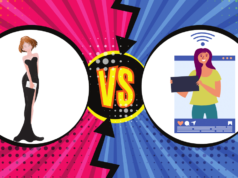Social media platforms give every user a voice, but how many followers do you need to be an influencer? With some well-known influencers attracting millions of followers, you can easily get caught up in the numbers. However, it takes more than likes and follows to make an impact on social media.
There are three main types of influencers one can attempt to attract the masses.
Aspirational Influencers
Aspirational influencers are the influencers many followers look up to and want to emulate. These individuals are often attractive, successful, and so much fun. We want the products they promote because we hope they’ll make us more like the influencers we idolize. Celebrities and social media models would both fall into the category of aspirational influencers. These influencers typically have millions of followers because they’re well-known personalities or good-looking individuals.
Authoritative Influencers
Authoritative influencers are influencers with a special knowledge about the topics they post about. When a personal trainer discusses her own fitness regimen, you trust that her process will get results.
Similarly, when a chef raves about a new food product he loves, you want to add the item to your own dishes. Authoritative influencers can have relatively small numbers or large numbers of followers depending on their public profiles.
Peer Influencers
Peer influencers are like any other social media users. We don’t see them as any more knowledgeable, attractive, or interesting as we are. Instead, these influencers position themselves as friends or as members of our community.
While peer influencers typically have the smallest number of followers, they can be the most influential type of influencers. We may want to be like the aspirational influencers and benefit from the experience of authoritative influencers, but the desire to keep up with our peers is much stronger. Research reveals that 3% of people would consider buying a product endorsed by a celebrity, but 30% would think about purchasing a product recommended by a peer or non-celebrity. Peer influencers may have the smallest group of followers, but the bonds they build with those followers makes them truly influential.
Do Numbers Really Matter?
While the number of followers you have matters to a certain degree, numbers themselves do not provide the full picture. Less than 25% of marketers felt distribution was the most important factor for a successful influencer campaign. Many of the marketers named audience relationship as the most important factor, followed by content production. As a result, many modern marketers prefer working with influencers with smaller social media followings.
Lack of fame is one of the qualities that make the micro influencers approachable. When they recommend a shampoo or a lotion or a furniture brand on Instagram, their word seems as genuine as advice from a friend.”
Marketers also trust that the people following peer influencers have a genuine interest in their message. Fake followers are the leading concerns among influencer marketers, according to several key industry research sources.
Since peer influencers tend to have smaller follower numbers, the likelihood that these individuals are purchasing fake followers to boost their numbers and attract marketers is small.
Many social media users become fixated on their numbers and continually ask, “How many followers do you need to be an influencer?” Being an influencer is more about your connection with your followers than about how many followers you have. If you have anyone listening to you and connecting with your message, you’re an influencer.
While everyone loves “followers,” but being a true influencer is about more than the number of people following you.











